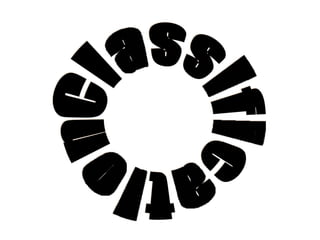
Curriculum In A Box
- 2. Science Standard 4 --- The Living Environment 3.4.1 – Demonstrate that a great variety of living things can be sorted into groups in many ways using various features, such as how they look, where they live, and how they act, to decide which things belong to which group Taken From: http://dc.doe.in.gov/Standards/AcademicStandards/StandardSearch.aspx
- 3. Definitions Vertebrate - an animal that has a spine, or backbone Invertebrates - animals that do not have a backbone Mammals -vertebrates that breathe with lungs and get milk from their mothers when they are young Birds -Vertebrates that have lungs, two wings, two legs, and a beak Fish - Vertebrates that live underwater and breath through gills, which take oxygen out of the water Amphibians - Vertebrates that live on land, they may start in the water when they are young but later move onto land Reptiles - Vertebrates that have lungs and their bodies are covered by scales
- 4. Background Information Classification is the arrangement of objects, ideas, or information into groups, the members of these groups have one or more things in common Scientists classify animals into two main groups, vertebrates and invertebrates. These categories are further classified into more groups, such as fish, birds, mammals, amphibians, and reptiles. Each group of animals has specific adaptations and similarities. Classification is an important way to see how animals are related to each other. They are divided using traits or charactoristics (like whether they have a backbone or not.)
- 5. List as many different types of animals that you can think of in the columns below
- 6. If you had to Classify your animals into 3 different groups how would you do it?
- 7. Classification Box Envelope #1 In the box you will find Numbered envelopes. Open the envelopes in order. In the first envelope you will find groups of classification cards. Chose one group and put the number that is on that group of cards on the Classification worksheet. Follow the directions on the work sheet. Put away the Classification cards and get out envelope number 2 Envelope #2 In the second envelope you will find a Dicotomus Key, this will help you to identify and classify different animals by using animal characteristics. This part will be done like a game. You will take turns choosing an animal cutout and placing it on the key, then follow the directions to see what animal you are. Keep track of how many times they Key shows you the correct animal in your picture.
- 8. Draw or Write the animals your group has here:
- 9. Envelope #3 In the third envelope you will find an activity/coloring book. You are to chose one activity to complete and one picture to color. On the picture that you color write down some things about the animal in your picture that would help you to classify them into different categories.
- 10. When you have completed all of the tasks in the envelopes please put your worksheets and coloring pictures into Envelope number 4. YOUR ALMOST DONE!